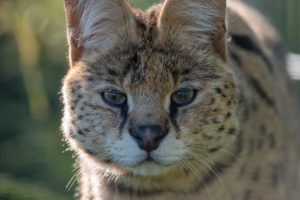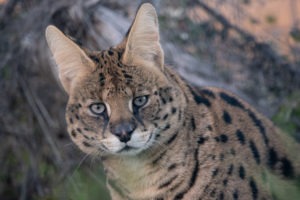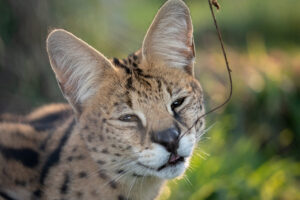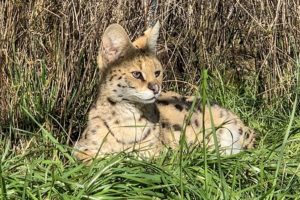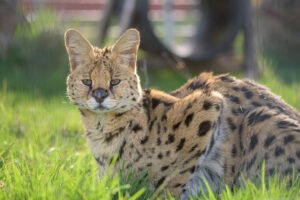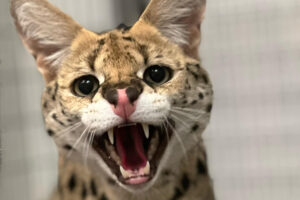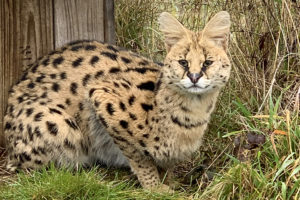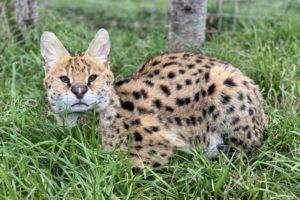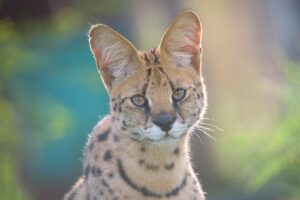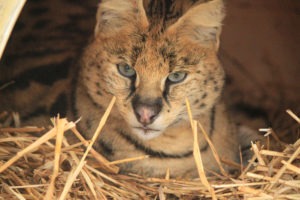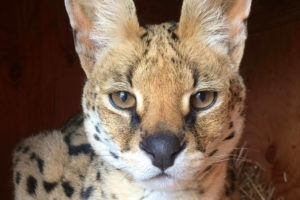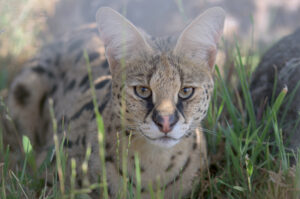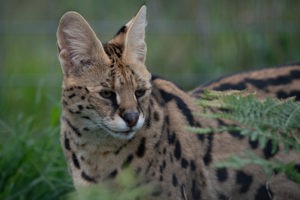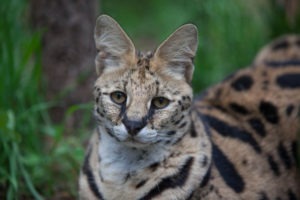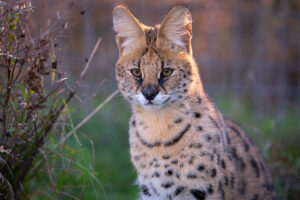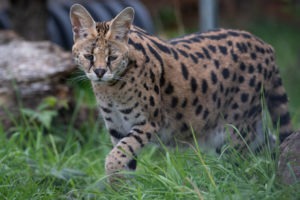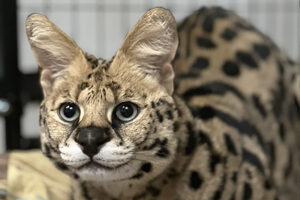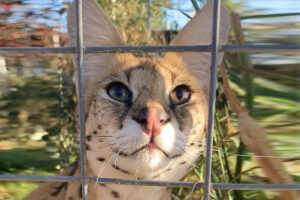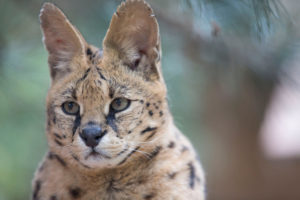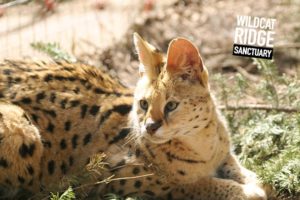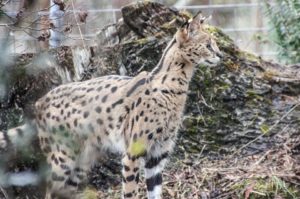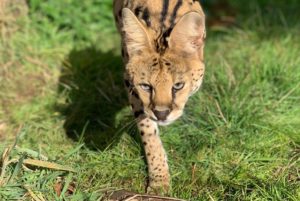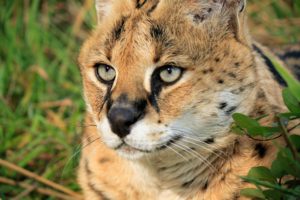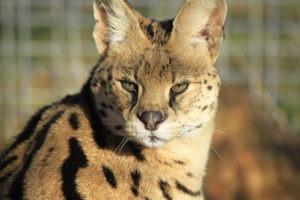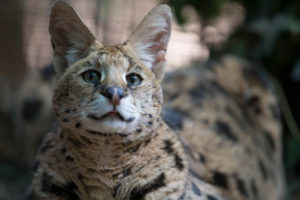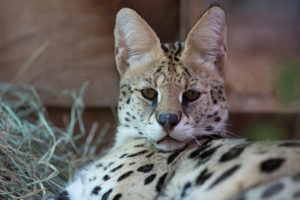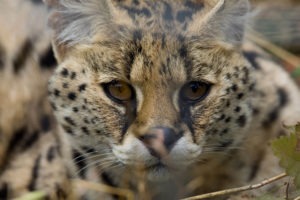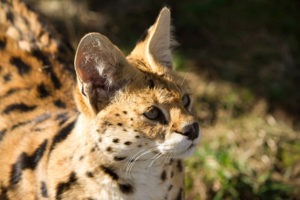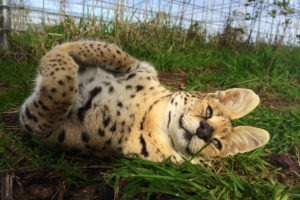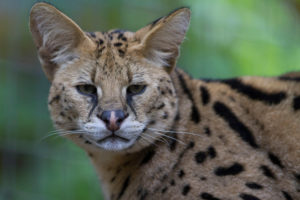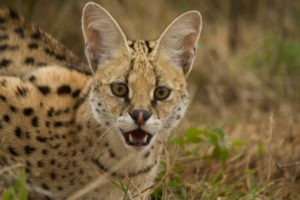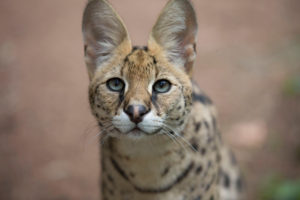While hunting, the serval will pause for up to 15 minutes at a time to listen with eyes closed.
Servals can catch birds over nine feet in the air.
Servals are very efficient hunters and are successful in about half of their hunting attempts.
Servals
The serval is a medium-sized African wild cat. The name comes from the Portuguese word “serval” meaning “wolf-deer”.
Modern DNA analysis indicates that servals maintain their own unique lineage descending from the same ancestors as the lion. Although the serval shares common traits with the cheetah, it is the cheetah which is thought to have descended from ancient servals. The serval is believed to be closely related to the African golden cat and the caracal.
The serval’s life expectancy is around 10 years in the wild and up to 20 years in captivity.
Did you know?
The serval has the longest legs of any cat relative to its body size and that the ears can rotate up to 180 degrees independently of each other?
Servals typically get rid of the internal organs of rodents while eating, and pluck feathers from birds before consuming them.
Servals eat very quickly, sometimes too quickly, causing it to regurgitate the food because of clogging in the throat.
The serval has excellent hearing and uses its ears to detect prey, even those burrowing under ground.

